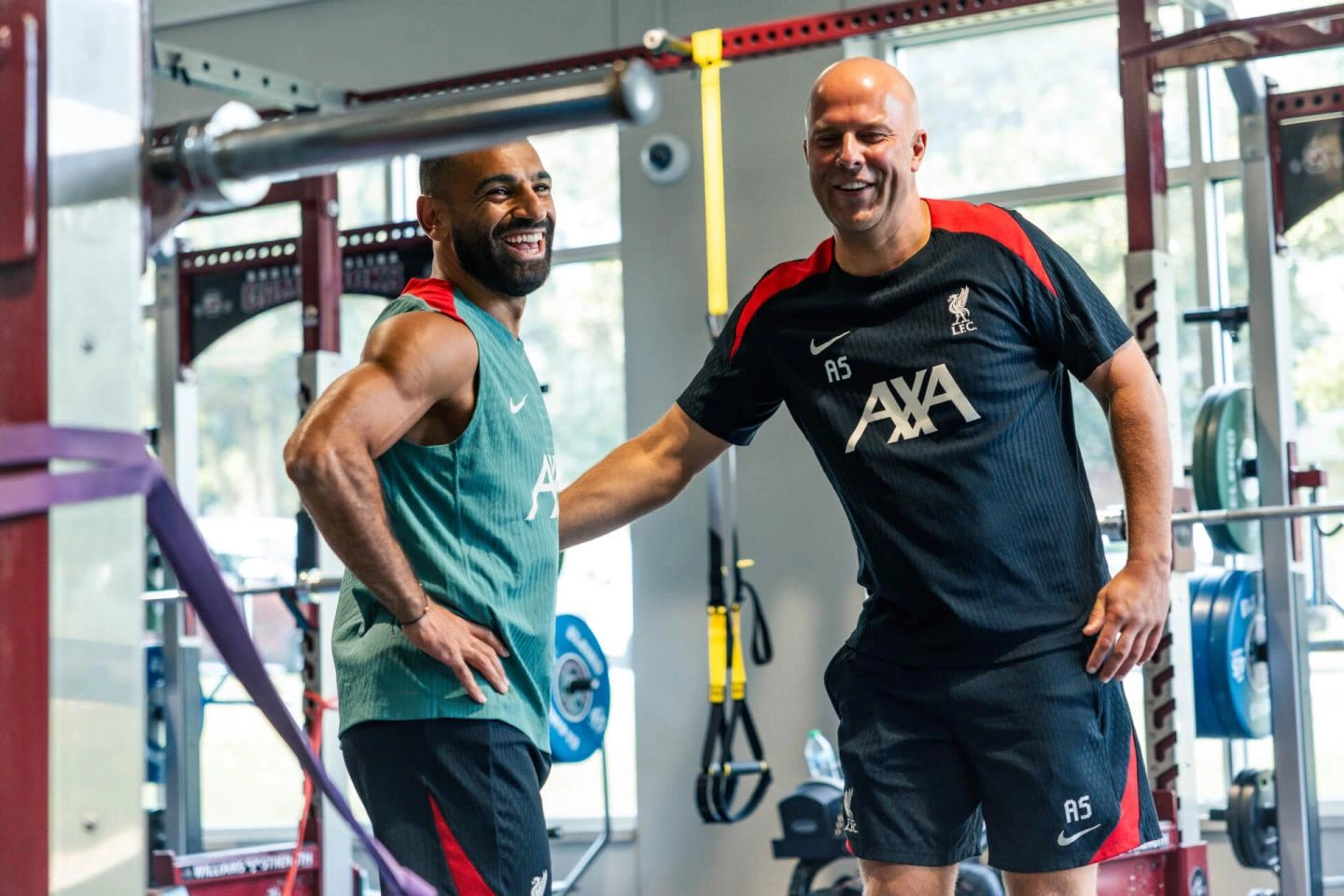Tactical Periodisation and Fatigue: Sports Science at Liverpool FC Explained
The latest episode of the Under Pressure podcast from Anfield Index offers an in-depth examination of Liverpool’s performance, with key insights from Simon Brundish and Dr. Phil Barter. In this first part, they delve into the impact of international travel on player fatigue, tactical periodisation, and how these factors shape Liverpool’s preparation and performance.
Fatigue Index and International Break Impact
One of the key themes of the podcast was the discussion surrounding Liverpool’s recent fatigue levels following the international break. According to Simon Brundish, this international window was the most intense Liverpool has experienced in recent memory. He notes, “This is the most intense international break in terms of minutes played that Liverpool have had since I’ve been tracking the data.” The duo highlighted that many of Liverpool’s key players participated in full matches across various international competitions, with several of them playing two games during this period.
Phil Barter added depth to this discussion by outlining the incredible travel distances some players endured. “Endo had 14,200 miles to cover during this break, crossing 17 time zones.” The implications of these long-distance travels were clear, with Barter pointing out that the travel and short recovery times have a direct impact on the fatigue index of the players. The fatigue index, a measure of workload and its effect on player readiness, is essential for understanding how players cope with both international and club demands.
For instance, the impact on key Liverpool players such as Alexis Mac Allister was significant. As Brundish explained, “Mac Allister’s fatigue index spiked to 1.85, which is as high as it gets, and that’s before you even consider the extra travel.” The result is that these players are often physically drained, despite not showing visible signs of injury. Brundish points out the subtle yet critical impact of fatigue: “You can get them on the pitch, but their on-ball quality suffers the most. They don’t feel the ball right, and when that happens, they don’t pass or shoot right.”

Tactical Periodisation and Training Adaptations
The concept of tactical periodisation was another focal point in the discussion, offering insight into how the club manages player fitness and readiness. Tactical periodisation, as described by Brundish, is a methodology that focuses on integrating fitness development directly into football training, as opposed to isolating it as a separate element. “Tactical periodization is all about managing freshness, developing fitness through football, and using football-specific drills to enhance decision-making under pressure,” Brundish explained.
Under this system, players’ physical preparation is closely tied to the demands of the match itself, with training volumes adjusted to mimic match-day intensity. Barter clarified that the Liverpool coaching staff, under the guidance of new personnel, are adopting this methodology in an attempt to reduce injuries and optimize player performance. “They prioritise matchday load to develop fitness and freshness, which is crucial when you have such a packed schedule,” he said.
However, both experts agreed that this approach faces significant challenges due to the relentless fixture congestion that Liverpool faces, particularly during international breaks and cup competitions. As Brundish lamented, “It’s really hard to run tactical periodisation when you have two games every week for seven weeks, and then the players go off on international duty.”

Long-Haul Travel and Injury Risks
Another significant talking point was the impact of long-haul travel on injury risks. Brundish noted that the research suggests a direct correlation between travel distance, particularly crossing time zones, and the increased likelihood of injuries. “There is research that shows long-distance, long-haul travel within 48 hours of playing increases injury risk,” he stated. This is particularly relevant for Liverpool, a team with numerous international players scattered across various continents.
Nottingham Forest’s away match against Liverpool provided a practical example of how fatigue and travel can negatively affect performance. Despite being in good form, Liverpool looked sluggish, which Brundish attributed to the cumulative impact of travel and fatigue. “We were at 182 sprints per game on average this season, but only managed 141 sprints in this match,” he pointed out. The drop in intensity was evident throughout the game, leading to a disjointed performance.
Statistical Analysis: The Travel Factor
From a statistical analysis perspective, the data clearly shows how travel affects performance. Liverpool’s players covered over 10,000 miles during the international break, with many crossing multiple time zones. This level of travel, combined with the physical demands of international matches, leaves little time for recovery before returning to Premier League action. As Brundish emphasised, “Five of our lads covered more than 10,000 miles, and that level of fatigue has a huge impact on performance.”

For example, players like Alexis Mac Allister, Endo and Luis Diaz were among the most affected, with their travel distances significantly higher than those of their European counterparts. This extensive travel not only spikes their fatigue index but also reduces their ability to perform at their peak when they return to club duty.
The insights provided by Simon Brundish and Dr. Phil Barter on the Under Pressure podcast underline the significant challenges Liverpool faces in managing player fatigue and performance, particularly following international breaks. With the tactical periodisation approach now being implemented at the club, there is hope that Liverpool can navigate these challenges more effectively in the future. However, as Brundish pointed out, “It’s going to be tough to balance the demands of travel, international duty, and matchday fitness.”
Liverpool’s statistical analysis reveals the stark reality of the modern game, where players are required to travel vast distances for international duty, often returning to domestic football fatigued and underprepared. As the season progresses, the club will need to carefully manage these variables if they are to maintain consistency and avoid injuries.




